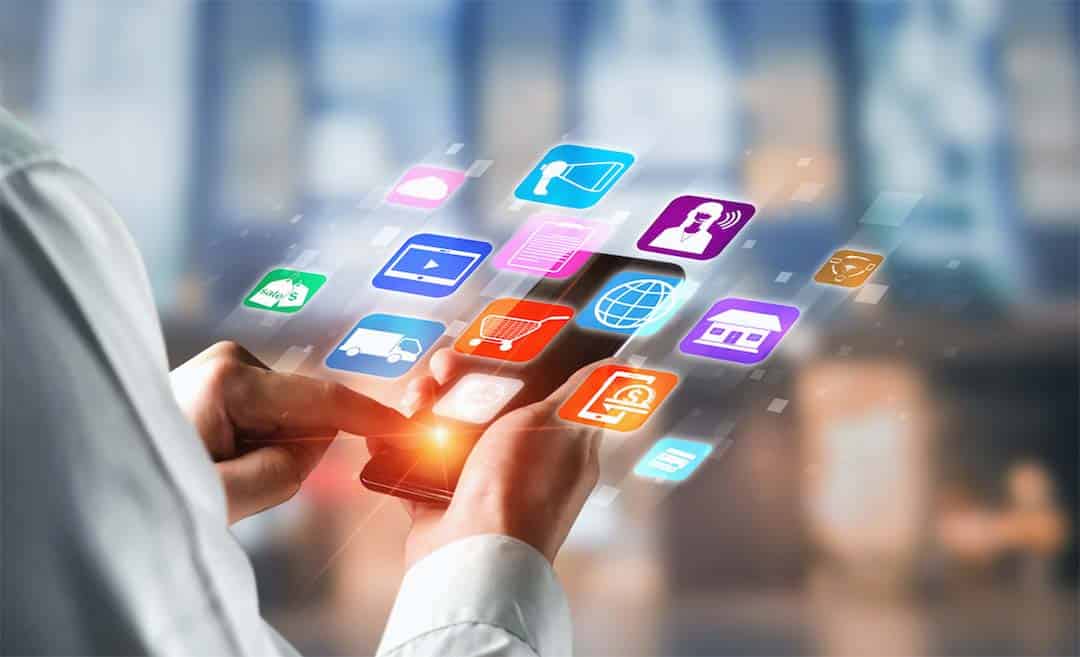Mobile technology uses handheld mobile devices and smartphones to access the internet, receive and send emails, texts, and other messages, or communicate over social media. Mobile technology is used for many different purposes, such as entertainment, communication, education, and business transactions like banking, shopping, etc.
What is mobile technology?
Mobile technology is a broad term encompassing all our daily electronic devices. It includes smartphones, tablets, wearables (e.g., smart watches), smart home devices, and more.
Have you ever wondered how your life would be different without cell phone apps? When you think about it—it’s difficult to imagine living without these little pieces of software that allow us to do things like research information online or get directions while traveling in different parts of the world.
Mobile technology has enhanced our lives by increasing our access to information and entertainment 24/7 wherever we go. In fact, mobile tech usage spans every age group and economic strata; millennials are even more likely than older generations to rely on their phones for everything from work emails to socializing with friends!
Common Uses of Mobile Technology
Mobile technology is a huge part of our lives today. From smartphones to tablets and smartwatches, we’re constantly using mobile devices to communicate with others, stay up-to-date on the latest news and information, or check email.
Below are some common uses for mobile technology:
Collaboration
Collaboration is the process of working together to achieve a common goal. Collaboration is important in business and especially in the workplace. It helps reduce costs and increase efficiency, contributing to greater profits for businesses of all sizes. But with mobile technology, collaboration can also be done remotely without having employees and managers travel from their homes or offices.
Save Money
Mobile technology is a great way to save money. When you use mobile technology to communicate with people, you don’t have to pay for long distance phone calls or travel expenses. You can also save money by using your smartphone as a GPS device if you are traveling somewhere unfamiliar.
And, you can save money by using mobile technology to communicate with your employees and customers. You will also increase efficiency and productivity because you don’t have to waste time traveling back and forth for meetings.
Remote Work
If you’re like me, you’ve probably had to take a business trip or two in your career. While it’s true that traveling can be exciting and fun, it also means being away from home for days or even weeks at a time. With remote work software available to today’s mobile professionals, however, there is no need to separate yourself from your loved ones or even leave the comfort of your bed!
Remote work software allows people based out of different locations—either around the corner or across an ocean—to collaborate on projects in real time. This saves both time and money by eliminating the need for long-distance commutes between team members’ offices (or homes). Remote workers can connect with their teams on video calls whenever needed, allowing them to attend meetings without physically stepping foot inside another building or office space.
Boost Productivity
Cloud-Based Solutions
- Mobile technology is a great way to boost your productivity.
- You can work from anywhere with it, which helps you to be more productive.
- It can help you communicate with your colleagues, clients, and suppliers while on the go.
Cloud-based solutions are popular because they’re easy to use, affordable and secure.
In fact, the cloud has become such a valuable tool for businesses that many companies have decided to move their entire IT infrastructure into the cloud. Cloud computing has led to increased cybersecurity efforts in recent years and has helped small businesses compete with big competitors.
Types of Mobile Technology
Mobile technology is used in a variety of ways. We’ve already discussed SMS and MMS, but there are many other types of mobile tech that you can use with your smartphone.
SMS
SMS, which stands for Short Message Service, is a text-based communication service. It is used to send messages to mobile devices.
SMS can be used on all mobile devices, and it’s not encrypted. This means that anyone can read the content of your SMS message if they get their hands on it. Don’t expect privacy when you’re using SMS!
On the other hand, if you want to send marketing content or promote your business, then you should use SMS marketing because most people are familiar with using this service and want to get rid of spam in their inboxes by ignoring emails from unknown senders (and even known ones sometimes).
MMS
MMS stands for Multimedia Messaging Service. MMS is a text message that contains multimedia content, such as pictures and videos. These messages can be sent between phones (or from a phone to a computer) and are most commonly used on cellular networks.
The most common media types include pictures, sounds, and images such as GIFs or memes (see: Texting Trends). You can also send videos in your MMS messages!
4G
4G is the fourth generation of cellular technology and has been around since 2010. The first generation was 1G, which used analog signals to transmit voice calls and text messages. 2G saw the introduction of digital networks and data transmissions, enabling faster speeds than its predecessor. 3G brought higher data rates through wider bandwidths and support for more devices at once; 4G took these improvements further by increasing maximum speeds even more (to 100 Mbps) while also reducing latency times.
5G
5G is the fifth generation of mobile telephony, succeeding 4G LTE. It is a wireless communication standard in the form of an international standard that was completed by 3GPP in December 2017 and will be officially published in June 2019.
The goal of 5G is to provide high-speed and low-latency data connections without congestion, which means that it can handle thousands of users simultaneously with minimal delay or dropouts.
GSM
GSM stands for the Global System for Mobile Communications. It’s a type of mobile network that uses a technology called Global System for Mobile Communications (GSM). The GSM network is used by more than 80% of mobile phone users to make calls, send text messages and browse the internet.
A GSM network comprises two main parts: the MSC (Mobile Switching Center) and BTS (Base Transceiver Station). The MSC handles all incoming and outgoing calls, while the BTS handles radio frequency transmission between towers within a limited range.
CDMA
CDMA stands for Code Division Multiple Access, or CDMA. CDMA is a wireless technology standard that allows multiple users to simultaneously use the same frequency band. This is unlike other technologies, such as TDMA and GSM, in which each user is assigned a specific frequency band. Only one user can communicate at any given time on that specific frequency.
WIFI
Wi-Fi is a family of technologies that allows electronic devices to exchange data or connect to the Internet wirelessly using radio waves. Wi-Fi is an IEEE 802.11 standard that defines the use of radio frequencies (RF) in the 2.4 gigahertz (GHz) band and 5 GHz band for telecommunication applications such as wireless local area network (WLAN), Wireless Wide Area Networks (WWAN), and Local area network (LAN).
Why is mobile technology important?
Mobile technology has become an essential part of our daily lives. From how we work and play to how we communicate and get around, mobile devices have changed how we do just about everything.
Mobile technology is important because it makes communication easier and more efficient. People can now use their smartphones to connect with family members, friends, and co-workers anywhere at any time. For example:
You can make a phone call from your car while driving home to work instead of getting caught in rush hour traffic.
You can email your boss a document instead of printing it out at home or work and then going over there in person with it in hand (and possibly getting stuck in traffic anyway).
Mobile technology is an essential part of modern life. It enables us to do previously impossible things, like making a video call from the top of Mount Everest or paying for groceries with your phone. Mobile devices have become so commonplace that we often take them for granted—but this means it’s easy for us to forget how important they are!
Hopefully, this article has helped you understand why mobile devices and apps matter so much, along with some interesting facts about their history and future. If you would like to learn more about Cynergy Technology and the services we provide, please feel free to contact us.







